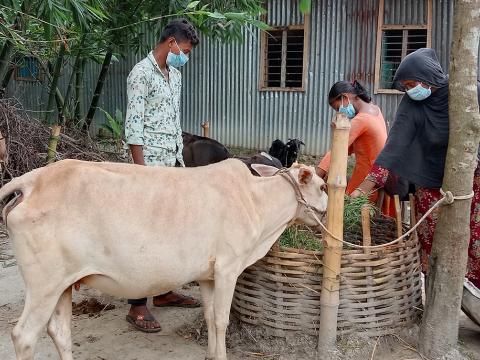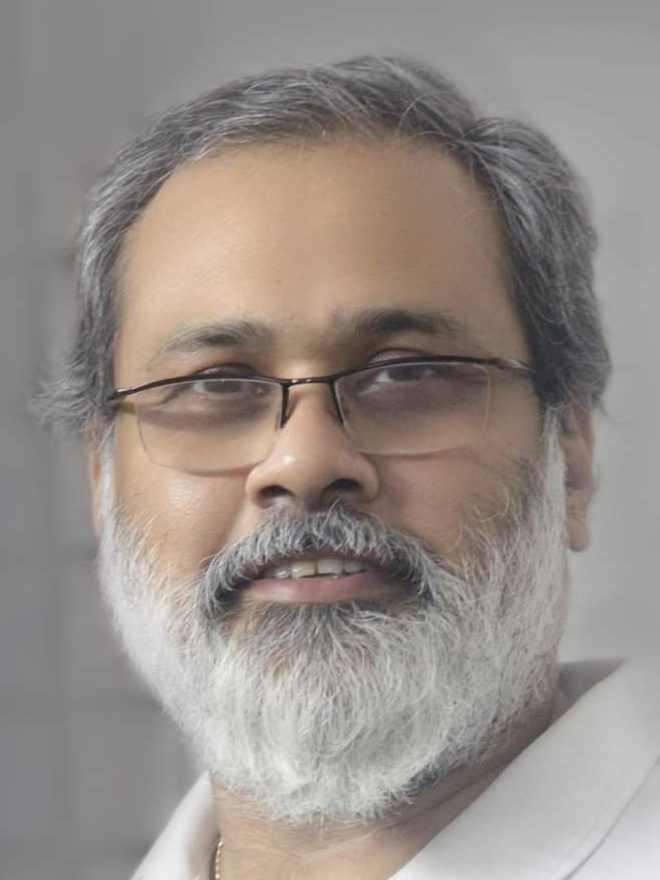
Offering animals lifts families from ultra-poverty
Arunava discusses the logic behind providing animals to some of the world’s poorest people
My grandfather and father came from a rural area of Bangladesh. In the village, every household had a cow - or wanted one. Rural children would spend most of their time with the cows, goats or chickens. There was not much for the children to play with back then, so the creatures were among the most essential things in their lives. They played with them, looked after them, took them for water, fed them. Children would get together and discuss the newborn calf or the hatching chickens. Animals were the centre of people’s lives, and they remain so today.
I have found that many people in more affluent countries do not realise that for tens of millions of their sisters and brothers in countries like Bangladesh finding enough food to feed a family remains a daily struggle. Getting a steady family income to secure children’s futures can be a distant dream. International humanitarian aid and development organisations like World Vision consider all sorts of options with these communities. Among them is whether it is appropriate to provide them with livestock.
I know that this can be controversial – not everyone agrees with using animals to meet people’s needs. But it’s not just about food and animals are never just a careless add-on in poor people’s lives. They become central to a family’s well-being.
Here in Bangladesh, as in so many contexts worldwide, we work with poor and ultra-poor households. People are typically landless, or they have small homesteads. They support themselves primarily through agricultural labour.
If you are in that situation, an animal is not a luxury, but your prime economic asset. By selling produce like eggs and milk, the animal becomes a source of regular income. It also becomes part of your savings. Imagine you have a homestead and a small plot of land, but no savings and no bank. The animals you care for become your long-term wealth. This combination of income and savings helps you provide nutritious, diverse food for your children. It creates resilience, too. You can sell your asset in any crisis, so it does the same job as an insurance policy.
I look back on hundreds of stories of transformation in families powered by animal projects. One such story is of a woman called Panna (pictured above), who lived with her husband and their two children in a neglected area, were literally living day-to-day when World Vision started working with them in 2018. The kids were hungry and they were not attending school. They had no clean water at home, nor a latrine. World Vision provided ten ducks, a heifer and seeds, along with a lot of training. Panna planted a vegetable plot, applying the manure from the animals. She started buying more livestock with the money she earned from selling vegetables and ducklings. In just three years, she has grown her farm to 40 ducks, 30 hens, five goats and three cows. Her house is improved, and her children are well-fed, and attend school regularly. Never think that people will not value the animals in their lives – the exact opposite is true. They are life-changing, and they are part of people’s daily life.
World Vision distributes cows, goats, chickens, ducks, pigs, quail and sheep in Bangladesh. When we start to work with a community, we ask people what they believe will get the best development outcomes. Every time, the first response is livestock. People know this can lift them from dire poverty and give them a foundation for growth.
It’s not all about animals, of course. They are always part of a broader more comprehensive plan for agricultural development. Our interventions consider the environment – the water, soil and tree cover, which make the land sustainable. We offer seeds for improved varieties of crops and the necessary inputs to help them grow. If a community has animals, though, they often won’t need artificial fertilisers, as they can use the manure. We provide training in improved agricultural techniques. We work with villages to supply irrigation or flood defences, as needed, and soil improvement. In some places, we help re-plant forests or regenerate exhausted farmland.
When we distribute animals, we provide intensive training in their care. We show people how to recognise diseases and where to access treatment and medicine. We follow the recipients up regularly. Families don’t hesitate to spend valuable savings on treatment or vaccines for their livestock. They know that vaccination and de-worming is an investment. You rarely hear of anyone mistreating an animal here – they would be undermining their own livelihood.
Over the years, I have seen that livestock are especially helpful for women like Panna, as they tend to care for the animals. This empowers them economically, socially and in the home. There is a similar boost for vulnerable people with limited access to the market, such as those with disabilities, or where social norms have left them economically disempowered.
For any organisation that wants to improve the lives of poor people in Bangladesh and so many other places around the world, I don’t see any alternative to providing animals. If you want better nutrition, increased income, savings and insurance against crises - if you’re going to empower women or those with disabilities and vulnerabilities – there really is nothing else that makes such a difference so quickly.
Arunava Saha is Deputy Director of the Integrated Technical Programme for World Vision in Bangladesh. In a career spanning 20 years with Care, BRAC and World Vision, he has become a specialist in the use of animals in nutrition and poverty alleviation projects. He is passionate about the use of development resources to lift children, families and communities from the daily torment of insufficient food, setting them free to pursue education, life skills and a secure future.

